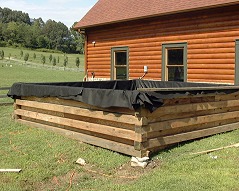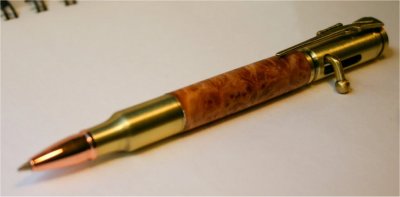I have built a new pond using rubber roofing material as a liner. Is this safe for fish?
 Sixty percent or more of what you’ll find in rubber roofing material is safe for fish. Forty percent of the time, the fish will be flashing, scratching and dying within 14 days. It has everything to do with the fungicidal powders and elastomizers (things that keep rubber ‘stretchy’) that they put into the rubber roofing material.
Sixty percent or more of what you’ll find in rubber roofing material is safe for fish. Forty percent of the time, the fish will be flashing, scratching and dying within 14 days. It has everything to do with the fungicidal powders and elastomizers (things that keep rubber ‘stretchy’) that they put into the rubber roofing material.
It’s true, though, that rubber liner for ponds was “born” on the roof. Later, companies just started modifying the formulas to come up with fish-safe products.
It’s a crap shoot, when you try using roofing material for ponds, and considering that rubber liner is available at or below manufacturers cost (less than forty cents a foot) from various online places, why risk it.
Liner ponds in ground

This is perhaps the most common type of pond in the country. They are relatively inexpensive for a large volume of water because essentially you only pay for the hole and the liner which keeps it watertight. EPDM rubber liner is supremely patchable if you can find the leak. It’s expandable as well by simply seaming two pieces together to expand in one direction or another. I like it quite a lot.
Their form is limited only by your imagination and the ability for the edge of the pond to retain water. Many persons have put these type of ponds on hillsides, only to have the low wall collapse and send the fish down the hill in a mudslide. Construction of these ponds should be attended by experienced persons and involves choosing the right spot, excavating the hole, lining it with protective felt or paper (carpeting is even used) and then the liner. At this point the hobbyist is left with the pleasurable aspects of disguising the edge of the pond with artificial copingstones, real landscaping stones, or other cover.
I like going right up to, and OVER the edge of a liner pond with SOD pieces. You can let the sod go RIGHT to the edge of the water, and it will drink water and it looks great.
As mentioned before, the in-ground liner pond affords a relatively large body of water with the least expense.
The in-ground liner pond has its greatest disadvantage in the following two areas: 1. They are often large enough to be a water hazard and since they are in-ground, the hazard to kids becomes very real. Secondly, since they are in ground and depend upon a liner to remain watertight, when a branch, tree or dog falls into the pond, the liner MAY take damage and begin to leak. Patching technology has come a long way in the last decade and so a torn liner of the EPDM class is not a loss. In ground ponds must also be engineered to avoid allowing any water to run into the pond from the surrounding yard. Such runoff will contain hazardous insecticides, roof runoff including creosote, landscape silt, nitrate fertilizers and herbicides.
Liner ponds above ground

The aboveground liner pond is my personal favorite. The pond is constructed of wood, landscaping timbers, brick and mortar, or other material including concrete, and then the liner is spread out inside. The liner is indicated in most instances to make the unit watertight. In other instances, such as a poured concrete unit, the liner is intended to create a smooth, inert surface for the fish and water. Liner does not affect water quality the way that concrete can. The water line in this type of pond is above the ground level; so rain runoff that can carry hazardous chemicals from the yard is no longer a threat. The waterline can be such that the pond is not a threat to unwary kids. Since the water line is above ground, your external filtration equipment receives a “flood prime” which is very energy efficient for the pump. Finally, depending upon the design, the fish are sometimes at waist level for easy and enjoyable viewing.
The most common complaint about above-ground-liner-ponds is that they aren’t “natural” looking. They are a man made facility with the clean lines of a raised planting area or retaining wall flowerbed. Most people dream of the in ground freeform pond, ringed with rock. These are admittedly fine looking ponds, but in these ponds, showcasing the fish is not the priority.




